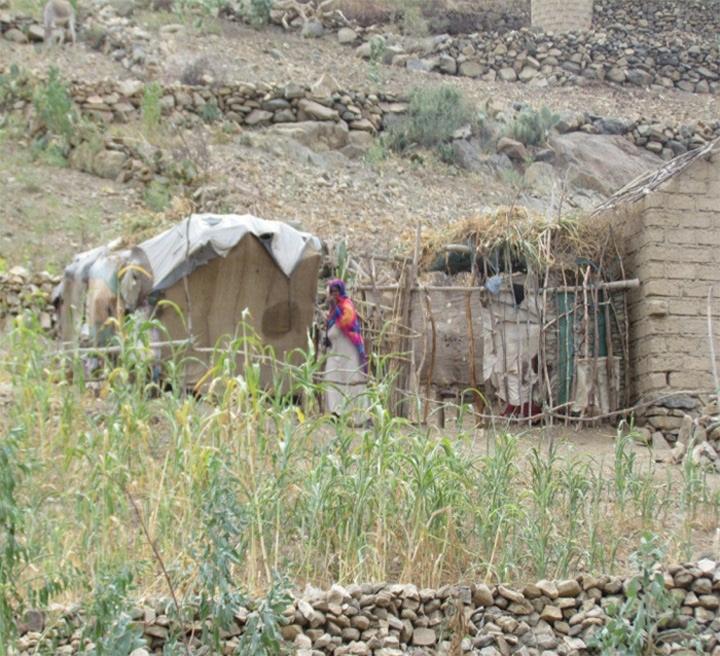Africa-Press – Eritrea. The transition from nomadic to sedentary life has led to opposing views on whether pastoralists should be settled or not. Proponents of resettlement programme argue that pastoralists should abandon nomadic way of life both in response to ‘pushes’ away from the pastoral economy and to ‘pulls’ of urban or agricultural life. The Rendeille pastoralists of Kenya, for example, have shifted to sedentary life due to increased marketing benefits as well as easy access to social services, including education to children. In contrast, there are findings of studies that refer to the negative consequences of settled life, some of which point to the problems of impoverishment for pastoralists who settle. There are also reports on poor nutrition and higher rates of certain infectious diseases despite better access of settled population to formal education and health care.
The shift to sedentary livelihood by the Eritrean nomadic population has increased dramatically over the last few decades as a result of sharp economic, political, demographic, and environmental changes. Although few households remain committed to the nomadic way of life, many formerly pastoral families have settled in or near towns and pursue alternate economic strategies, including crop cultivation, agro-pastoralism and urban wage labor. Many of the settled pastoral households feel that they now better, a more convenient daily life. In addition, there are reports on the provision of education, healthcare services and pure drinking water for the settled communities hitherto not available in their area. The health status of the community, in particular, has shown great improvement since sedentarization, though few households continue to make use of ethno-therapeutic treatment. Overall, the shift to sedentary livelihood is becoming increasingly common in Eritrea as a necessary subsistence strategy.
The data for this article was solicited mainly through the field work that the writer conducted in the Afaebet sub-zone of the Anseba Regional Administration. The aim is to provide better understanding of the impact of sedentary life on the social and economic well-being of the former pastoral communities. In the sections that follow, social amenities and infrastructure to the settled communties (water, housing, health, education and road) are briefly discussed.
Housing: The changes that can be seen in the traditional dwellings are part of the processes that the pastoralists have gone through the transition to a sedentary lifestyle. The traditional house type for the nomadic population is called ablo. This type of house is designed in a simple way where holes are dug with thin poles tied together to the ground and covered with branches and leaves that serve as shelter. Women usually play an active role in the construction of ablo. With the transition to settled life, ablo gradually changed into merebae. Merebae is a modern house where modifications involve not only building materials but also the floor plan and the general lay out. It is made of cement blocks, lumber, and corrugated iron sheet. The factors that contributed to the development of merebae are increase in the household income and innovative idea about the new house styles.
Water: The main sources of water for communities surveyed are tap water, which are equipped with distribution facilities. There are also big boreholes which contain sufficient amount of water for human consumption. The boreholes are well fenced and a guard is hired to look after their safety. There are few streams that flow during the rainy season and remain dry for most part of the year. The hand-dug wells are found along these streams making them easily exposed to floods during the rainy season. The amount of water is generally classified as good and the frequency is permanent. The water sources are owned by the community. The residents feel that protecting water sources from being contaminated is a major concern.
Health: In the past, the nomadic groups had higher rates of tuberculosis, syphilis, and trachoma than the settled agricultural populations. They also suffered from high rates of parasitic infections, malaria and anemia, particularly those people living close to rivers. On the other hand, infant and child mortality rates are lower for settled communities than for the pastoral population because of increased awareness and access to modern medical services. In addition, the age-specific weight measurements for children of settled households were significantly higher than for the same aged children from the pastoral households. This is the outcome of better hygiene and protection from infectious diseases. At present, preventative measures, such as vaccination-immunization, are widely available to households who are leading settled life. Nevertheless, many households still practice ethno-therapeutic medicine made of herbs and roots to treat various types of illnesses. Despite the positive results achieved in the health sector, much remains to be done to further improve the health status of the population. The problems with the inadequate water supply and improper sites for waste disposals need proper attention as these pose challenges to the welfare of the residents.
Education: Eritrea is currently moving ahead with a program aimed at expanding school enrolment of children in the pastoral regions of the country. It has launched a program that enhances education by setting up boarding schools. As a result, the number of schools has substantially increased since sedentarization. In the past, mobility and remoteness from the main development centers had always stood as constraints to the provision of modern education to the nomadic people. Besides, parents were reluctant to educate their children beyond primary school because of the cultural conservatism. Rich herders, in particular, gave no value to educating their children in school; instead they encouraged them to get engaged in animal herding and taught them how to do it.
Many previously unreached and disadvantaged areas have benefited from Government investments in education resulting in increased number of students, teachers and schools. Moreover, to help children from the pastoral community complete secondary school, a government-run boarding school has been built at Nakfa. In spite of the progress made in the field of education, there still exists gender disparity, which is Access to primary education is expanding in the formerly nomadic areas highly skewed towards male students. As a result, the proportion of female enrolment progressively decreases as the level of education increases. The most critical challenges that limit girls’ education are related to social conditions. Community attitudes towards females’ enrolment, early marriages and heavy domestic loads are the main factors that contribute to the gender inequality in education.
Road: In the opinion of the local residents, infrastructure in their area has shown a substantial growth since the country won its independence in 1991. Improvement in road transport network has created conditions for enhanced social contacts between residents of nearby villages. It has helped for the establishment of small scale businesses such as shops and restaurants. Accessibility has also greatly improved as the newly built roads pass through several villages and rural towns, However, the local people still face problem of transportation due to lack of sufficient number of buses. In areas where the situation is severe, camels are widely used as a means of transport.
Salient features of the transition to sedentary agriculture
For More News And Analysis About Eritrea Follow Africa-Press







